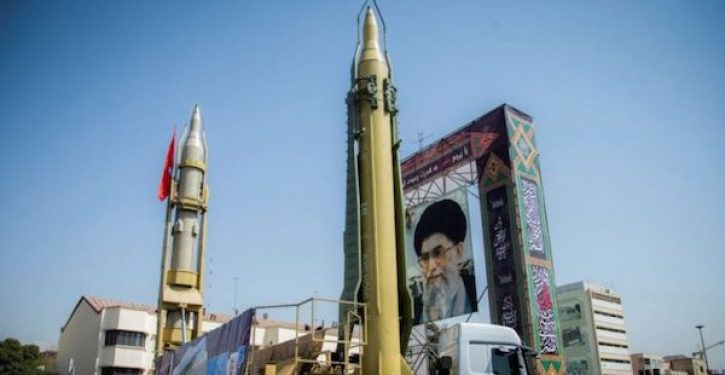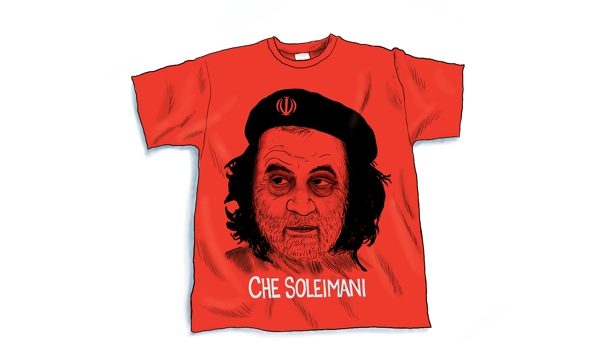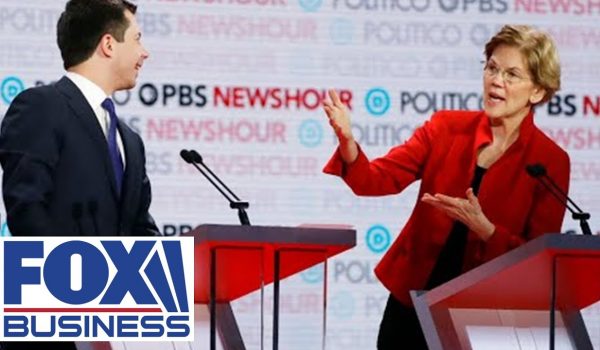
Iran has declared it will no longer abide by any of the restrictions imposed by the 2015 nuclear deal (JCPOA). But it doesn’t really matter. The JCPOA didn’t really restrict Iran, and Iran wasn’t observing essential parts of the agreement anyway.
In a statement broadcast on state TV late Sunday, the Iranian government said the country would no longer observe limitations on uranium enrichment, stockpiles of enriched uranium, or nuclear research and development. Iran’s foreign minister added on Twitter:
As 5th & final REMEDIAL step under paragraph 36 of JCPOA, there will no longer be any restriction on number of centrifuges
This step is within JCPOA & all 5 steps are reversible upon EFFECTIVE implementation of reciprocal obligations
Iran's full cooperation w/IAEA will continue
— Javad Zarif (@JZarif) January 5, 2020
Will this presidential election be the most important in American history?
Full cooperation? Humbug! Saying that Iran is cooperating with the IAEA is like saying Rod Blagojevich was an honest politician.
Per the Institute For Science And International Security, which goes by the unfortunate acronym of ISIS (but it’s the good ISIS), the IAEA found many Iranian violations of the JCPOA in its most recent report. They violations, some of which ISIS declares to be “not fully reversible,” include the following:
- The IAEA found natural uranium of “anthropogenic origin” at an undeclared site in Iran;
- Iran introduced uranium hexafluoride and started uranium enrichment at the Fordow Fuel Enrichment Plant (FFEP);
- Iran further increased its quantity of low enriched uranium above the JCPOA’s 300 kilogram (kg) cap (uranium hexafluoride mass), ramping up monthly production significantly;
- Iran continued to produce enriched uranium above the limit of 3.67 percent, producing at a level of up to 4.5 percent;
- Iran initiated the operation of many advanced centrifuges at the Natanz Pilot Fuel Enrichment Plant (PFEP) to accumulate enriched uranium;
- Iran increased the number and type of centrifuges enriching uranium above the limit of 5,060 IR-1 centrifuges. The total separative work involved in uranium enrichment has increased from an estimated 4,550 to 6,200 separative work units (SWU) per year, a 36 percent increase over the enrichment capacity allowed by the JCPOA;
- Iran withdrew advanced centrifuges from storage for installation at the PFEP. It reinstalled a cascade of 164 IR-4 centrifuges and one of 164 IR-2m centrifuges in the PFEP and initiated the collection of enriched uranium;
- Iran installed and operated several new advanced centrifuge types at the PFEP not listed as permitted for installation in the nuclear deal;
- Iran enriched uranium in a cascade of 30 IR-6 centrifuges at the PFEP and initiated the installation of a total of 164 IR-6 centrifuges that would accumulate enriched uranium;
- For twelve days, Iran conducted mechanical testing of three IR-4 centrifuges simultaneously at the Tehran Research Center;
- Iran “prepared a new location,” beyond those specified in the JCPOA and unidentified in the report, for mechanical testing of centrifuges;
- Iran used declared centrifuge manufacturing equipment for activities beyond those specified in the JCPOA, such as for producing centrifuges in type or number not allowed by the JCPOA;
- Iran continued to use carbon fiber in making rotor tubes that was not subject to continuous IAEA containment and surveillance measures, in violation of conditions in the JCPOA and a January 14, 2016, Joint Commission implementing decision on how rotor tubes would be manufactured with materials such as carbon fiber that must be taken from a designated storage location under IAEA monitoring. This case implies that Iran’s nuclear program had hidden stocks of carbon fiber or had acquired it from abroad or from another Iranian entity without subjecting the carbon fiber to the rules established on storing it under IAEA monitoring before its use in manufacturing rotor tubes. (Any such carbon fiber was likely obtained via illicit procurement from abroad);
- As described by U.S. authorities, Iran may be violating the JCPOA’s procurement restrictions by illicitly importing nuclear dual-use equipment.
Because of a secret side deal revealed by the Associated Press long before the deal with U.S. negotiators was agreed to, Iran gets to self-inspect the Parchin military base with no IAEA inspectors present. Parchin is the site where Iran was working on nuclear triggers for its bomb program. So there is no way to know if they are violating the JCPOA there.
All other military base inspections are allowed under the JCPOA. The agreement specifically “requests the Director-General of the IAEA to undertake the necessary verification and monitoring of Iran’s nuclear-related commitments for the full duration of those commitments under the JCPOA.” Despite what the JCPOA states, the Iranian authorities claim military sites are off-limits to the IAEA. Sadly the IAEA and the countries that stayed in the deal refuse to push the point because they don’t want Iran to seem non-compliant.
One of the problems with this refusal involves “Section T” of the deal. In Aug. 2017, the IAEA’s announced that it had been unable to verify a vital part of the JCPOA, “Section T.” It outlines “Activities which could contribute to the design and development of a nuclear explosive device.” That inability doesn’t mean Iran violated “Section T.” It means your guess is as good as mine because nobody knows — but the deal says the IAEA is supposed to inspect.
Using information secretly gathered by a Mossad operation in Iran and verified by the United States, in April 2018, Israeli Prime Minister Binyamin Netanyahu exposed a significant lie in the information the Iranians supplied to the IAEA for its 2015 report. Iran not only had a nuclear weapons program (called Amad), but after it was supposedly canceled in 2013, the work continued.
Iran had been non-compliant with its obligation to reveal its nuclear history. According to the JCPOA, the rogue nation was supposed to disclose all the details of its nuclear program that existed before the deal. This was a condition for implementing the agreement. The historical knowledge is necessary so the IAEA will know how, when, and where to inspect Iran’s program in the future. When it came time to “fess up,” Iran told the IAEA that it never had a nuclear program. The IAEA reported what it was told instead of pushing back against a blatant lie. This is another example of a breach of the accord that was published as compliance. In other words, the entire agreement was based on a lie and should never have been implemented.
There are many other examples like new construction, the underground Fordo Nuclear Facility, or president Obama’s promise not to enforce snapbacks, or the side deal allowing Iran to upgrade centrifuges within the agreement. Still, the point is the JCPOA never really handcuffed the Iranian nuclear program. That’s why the current president pulled out of the JCPOA two years ago. And that’s why Iran’s announcement doesn’t matter.
Cross posted at The Lid




